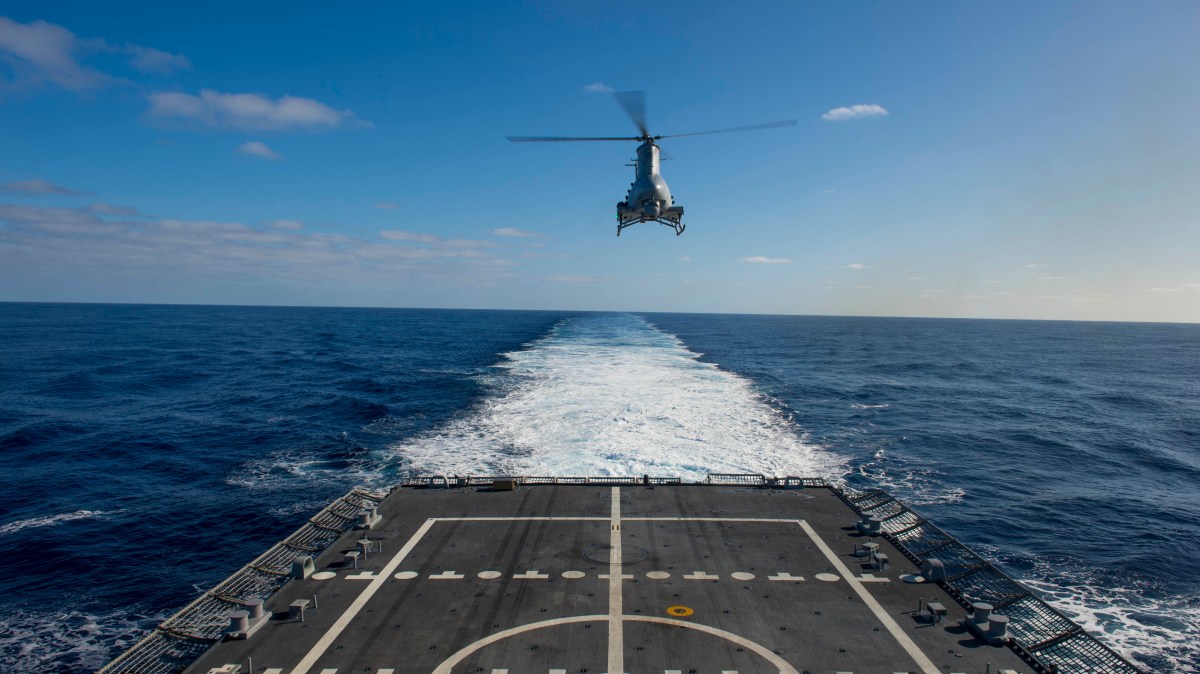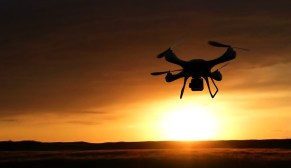Congress shows interest in boosting unmanned systems in Navy

A key congressional subcommittee has a message for skeptics: Contrary to what some believe, unmanned systems are actually popular among some lawmakers.
This came from the chairman of the House Seapower And Projection Forces Subcommittee and was backed up by several members during a Thursday hearing — a signal that the Navy seems to have a receptive audience to its unmanned system plans.
“I want to dispel any narrative that has taken hold in some quarters that Congress and this committee in particular are universally opposed to unmanned systems and platforms,” Chairman Rep. Joe Courtney, D-Conn., said in his opening remarks of a hearing on unmanned systems. “In fact, some of our most reliable and well-known unmanned platforms…were a result of direct congressional action despite reservations from the department.”
The Navy is currently in the midst of strategizing its force design and looking for ways to replace its aging systems with newer technology-driven solutions. The result could be a mix of manned and unmanned systems that will likely impact the rest of the military as the Navy is seen as the critical force in competition with China.
The service also appears less reserved with how much it wants to use unmanned platforms in the future. It recently completed a test sending a “ghost fleet” autonomous ship from the Gulf of Mexico to San Diego. The Navy plans to launch more field tests to further refine the tech, officials told Congress.
The Navy plans to invest not just in sea-based unmanned systems but in those for the air, like the MQ-25 for refueling and MQ-9 for network linkage and data passage. Undersea autonomous vessels add “another degree of difficulty,” but are also of interest, Vice Adm. James Kilby, deputy chief of naval operations for warfighting capabilities and requirements, told lawmakers Thursday.
“We are looking to pivot to this different force architecture,” Kilby said.
Leaders have said that to get autonomous vessels to work, Congress will need to authorize further investments in the connectivity of ships and other technology that will ensure the ability of vessels to maneuver while facing electronic interference or cyberattack.
“Certainly we need to focus on reliability,” Kilby said. He later added: “We need to be very vigorous in our introspection on our security.”
But still, not all lawmakers are sold on the idea of unmanned systems. Virginia Democrat and former Navy officer Elaine Luria said she is concerned about reliance on technology that is vulnerable to cyberattack and GPS denial.
“You can assume in a conflict with China you are operating in a GPS-denied environment, so if you are going to have an unmanned vessel and it doesn’t have GSP capability and you also have other restrictions of communicating with it directly…how is it useful? How is it going to be operated remotely?” Luria said separately Thursday during a Hudson virtual event on the future of the Navy.
Luria said that beyond Thursday’s hearing, she is expecting further briefings and documentation from the Navy on its unmanned systems plans, so her skepticism may wane with more information. But currently, she is unconvinced.
“I am not alone as a member of Congress who really don’t understand where the Navy is going with this,” she said.
In the Thursday hearing, the Navy said it will rely on Project Overmatch — its project to build a network of networks to connect across warfighting domains — for cyber resilience of its unmanned systems. Overmatch is the Navy’s take on the Joint All Domain Command and Control (JADC2) operational construct, where sensor data and systems operating across land, sea, air, space and cyber can seamlessly communicate, just like an Internet of Things.




